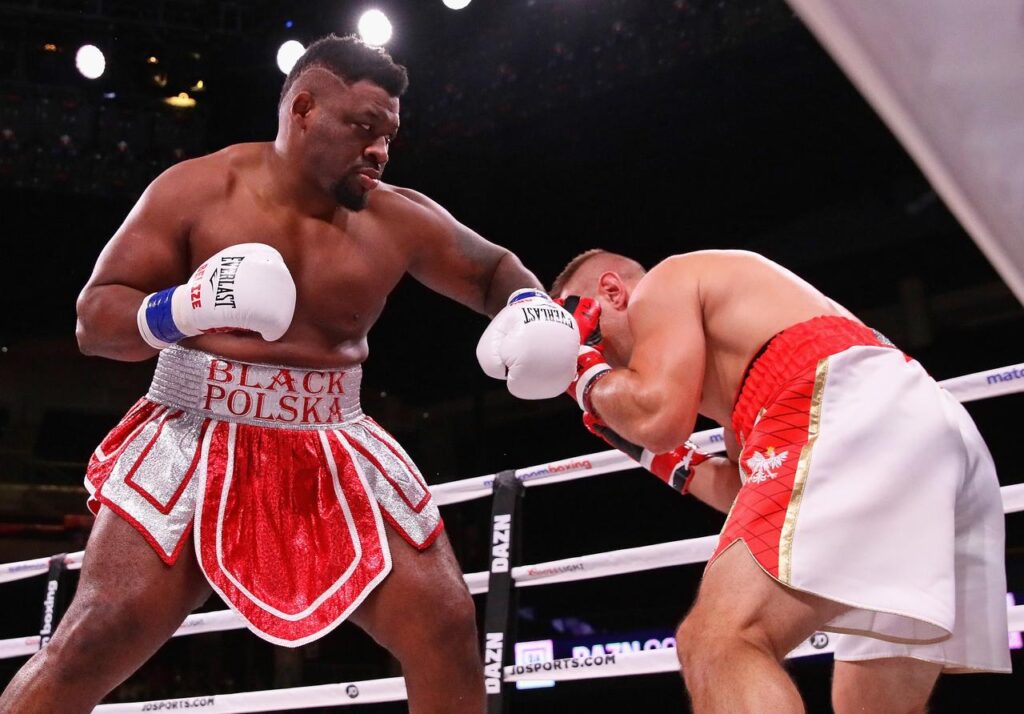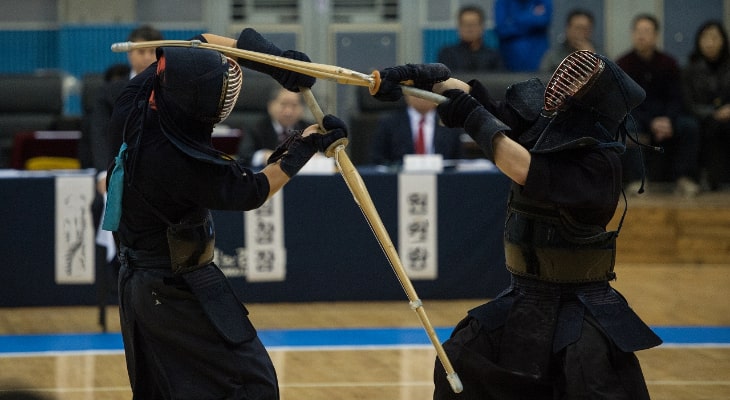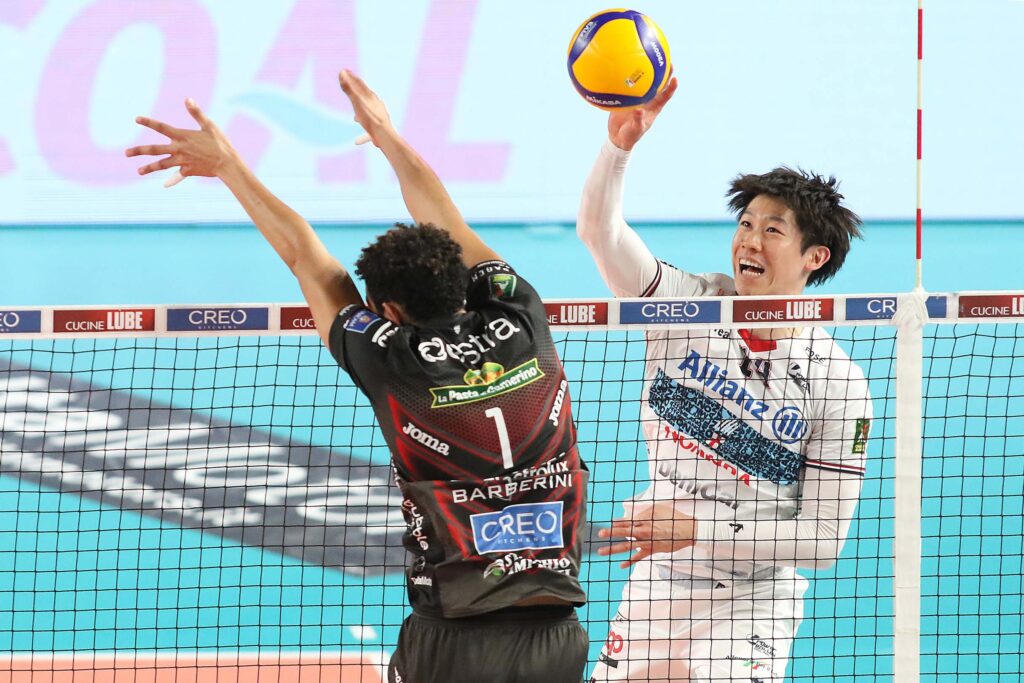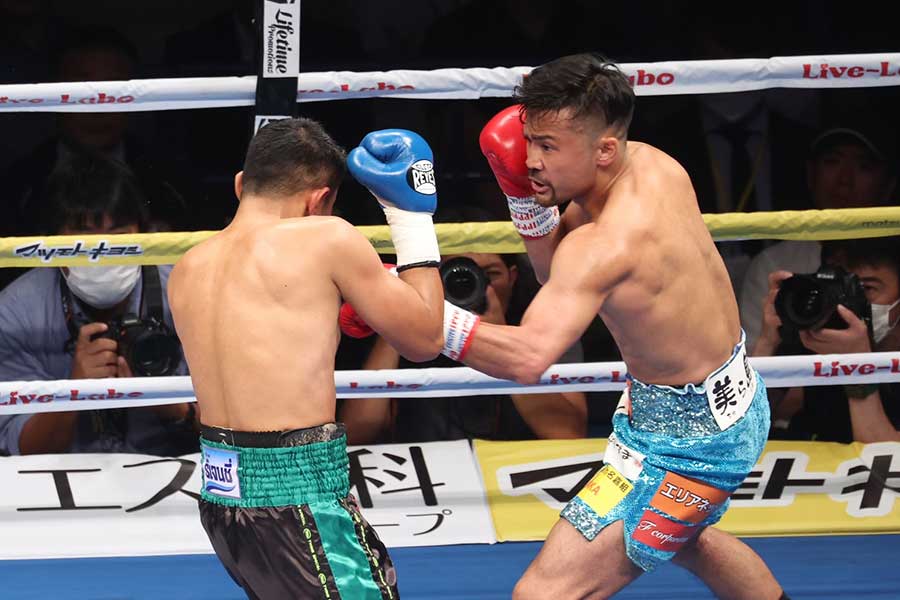
Boxing is a sport that combines strength, skill, and strategy, and one of the fundamental objectives is to hit your opponent.
In boxing, hitting an opponent is generally referred to as “punching” or simply “punch” or “hit,” but in boxing, certain types of blows have their own names.
Here we will explain the main striking techniques used in boxing.
目次
- 1 A deep dive into boxing striking techniques and combinations
- 2 Punches that are allowed in boxing and blows that are illegal
- 3 How to effectively hit your opponent (hit a punch)
- 4 Famous boxers’ fighting methods, striking styles, techniques, etc.
- 5 Practice each punch with punching tools!
- 6 How to deliver a boxing punch smoothly
jab
The jab is the basic and most common punch in boxing. Quickly extend your fist forward and aim at the opponent’s face or torso.
This punch is used to maintain defense while gauging distance and looking for openings in the opponent.
Straight (right straight)
A straight is a punch launched in a straight line toward the opponent, similar to a jab, but primarily using the back hand (often the dominant hand).
This is a punch that is more powerful and is often used when aiming for a KO.
hook
A hook is a punch thrown in an arc from the side, aiming at the side of the opponent, especially the jaw and side of the head.
Effective in close range combat and breaking the opponent’s guard.
uppercut
An uppercut is a powerful punch thrown from the bottom upwards.
It is mainly used to aim at the chin when the opponent’s guard is stiff or when the body is leaning forward.
This punch has the effect of shaking the opponent’s brain vertically, often resulting in a KO.
body shot (body blow)
A body shot is a punch aimed at the opponent’s torso, especially the ribs and abdomen.
It has the effect of reducing the opponent’s stamina, making it an important strategy in long-term battles.
If you keep hitting your body, your legs will stop moving and your footwork will deteriorate.
These punching techniques are the basic way a boxer delivers blows to his opponent.
Each punch has a specific purpose, and by strategically combining them you can control the flow of the match and lead to victory.
Boxing is not just a clash of strength, but a sport that relies on technique, timing, and strategy.

A deep dive into boxing striking techniques and combinations
Striking techniques and combinations in boxing are essential to success in a match.
These techniques are used to damage the opponent, break down their defenses, and find opportunities for victory.
Below, we will explain the main hitting techniques introduced earlier, how to use them, and effective combinations.
Major hitting techniques
-
Jab :
- The most basic and important punch. Used to gauge the opponent while maintaining reach, or as a starting point for an attack.
- Its role is to break through the defense and pin down the opponent, paving the way for other attacks.
-
Cross (also called straight) :
- A straight punch thrown with the hand opposite to the lead hand (strong hitter). It has more power than a jab and can lead to a KO.
- By following up with a jab, you can aim at areas where your defense is weak.
-
Hook :
- A punch thrown from the side with a bent arm into an opponent’s face or body. It’s extremely powerful and can lead to a KO if hit accurately.
- A hook to the face will easily break down your opponent’s defense, while a hook to the body will slow down your opponent.
-
Uppercut :
- A punch that is thrown from bottom to top, aiming for the inside of the opponent’s guard. It is especially effective against opponents with a strong guard.
- Easy to use in close range fights and clinch.
effective combination
- Jab – Cross : The most basic combination called one-two. Get your opponent’s attention with a jab and aim for a decisive blow with a cross.
- Double Jab – Cross : Use two consecutive jabs to break your opponent’s rhythm, then attack with a cross.
- Jab – Cross – Hook : Break down the opponent’s defense with a jab and cross, then hit from the side with a hook. Break through defenses with multi-pronged attacks.
- Jab – Uppercut – Cross : Get attention with a jab, hit the inside of the guard with an uppercut, then follow up with a cross.
practice and application
These techniques and combinations can be learned through repeated practice and used freely in matches.
Through mitt hitting, shadow boxing, and sparring, it is important to improve the accuracy, speed, and power of each technique.
Also, reading your opponent’s movements and using these techniques at the right time will lead to victory.
Boxing is more than just a sport about throwing powerful punches; it requires a deep skill set that combines strategic thinking, quick judgment, and technique.

Punches that are allowed in boxing and blows that are illegal
Boxing is a sport played under strict rules, with permissible types of blows and clearly defined fouls.
These rules are important to ensure athlete safety and fair competition.
Types of blows allowed
In boxing, only strikes with fists are allowed. The blow must be delivered to the front of the opponent, that is, to the front of the face and abdomen. Specifically, the following punches introduced earlier are permitted.
- Jab : A fast punch thrown directly at the opponent from the front.
- Straight/Cross : A powerful straight punch delivered primarily from the opposite side of the lead hand.
- Hook : A punch thrown from the side in a curved trajectory. Aim for the head or side of the body.
- Uppercut : A punch launched from below upwards, aimed at the inside of the opponent’s guard.
Blow that is considered a foul
The following actions are considered illegal in a boxing match:
These foul acts threaten player safety and are strictly prohibited.
- Blows to the back of the head : Blows to the back of the opponent’s head, especially the back of the head, are prohibited. This is extremely dangerous and can cause serious injury.
- Low Blow : Blows below the waist line, especially to the genitals, are prohibited. This type of blow causes unnecessary pain and injury to the player.
- Kidney Punch : Rear blows to the kidneys are extremely dangerous and are prohibited.
- Rabbit Punch : A sudden blow to the back of the head is also prohibited. This type of blow can cause concussions and other serious injuries.
- Pushing and Throwing Techniques : Boxing only allows striking techniques; pushing or throwing an opponent is prohibited.
- Headbutts, elbow strikes, knee strikes : These are all actions prohibited in boxing. Only fists are used in boxing.
If a player commits one of these violations, he or she may receive a warning, have points deducted, or in the worst case scenario, be disqualified.
Compliance with the rules is extremely important for the safety of athletes and the maintenance of sportsmanship.

How to effectively hit your opponent (hit a punch)
Boxing requires multiple strategies, techniques, and proper conditioning to effectively hit your opponent.
Below, we’ll explain how to break down your opponent’s defense, when to counterpunch, and how to train to improve your conditioning and reflex speed.
How to break down your opponent’s defense
-
Use feints : Use feints (fake movements) to provoke a reaction from your opponent and create an opening in their defense. Feints can be done by swinging a punch or faking a shift in weight.
-
Bodywork : If your opponent has a high guard, you can make them lower their guard by attacking them with body shots. Continuous body attacks will drain your opponent’s stamina and weaken their defense.
-
Keep the pressure on : Keep moving forward to put pressure on your opponent and take control of the ring. This will tire out your opponent and create an opening for their defense.
counter punch timing
-
Read your opponent’s patterns : If you notice your opponent repeating certain punches or combinations, prepare a counter to match that move.
-
Use slips and parries : Avoid your opponent’s punches by slipping or parrying them, then immediately counter punching.
-
Proper distance : Proper distance is important for a successful counter. Fight within your effective range, neither too close nor too far.
Training to improve conditioning and reflex speed
-
Interval training : Alternate high-intensity and low-intensity exercise to strengthen your cardiovascular system and increase your resistance to fatigue.
-
Shadow Boxing : Shadow boxing helps improve the precision and speed of your movements. Practice feints and combinations to improve your reflexes.
-
Mitt Training : Mitt training with a coach or training partner develops accurate hitting and reaction speed. By punching in time with your opponent’s movements, you can learn how to react in a realistic combat situation.
-
Reaction speed training : Improve your visual reaction speed and hand movements by using tennis balls and specialized reflex training tools.
-
Skip Rope : Useful for improving foot speed and timing. You can develop your sense of rhythm and endurance at the same time.
By combining these strategies, techniques, and training methods, you will be able to increase your offensive power in boxing and deliver effective blows to your opponent.
Refine these skills through continuous practice and match experience.

Famous boxers’ fighting methods, striking styles, techniques, etc.
The history of boxing has many famous boxers known for their unique fighting styles, striking styles, and techniques.
Below, we introduce some legendary boxers and their signature styles and techniques.
Muhammad Ali
- Style : Ants are known for the phrase “float like a butterfly, sting like a bee” and are extremely nimble and quick. His weapons were his jab and reflex speed.
- Technique : Ali’s footwork was very good and he was able to move around the ring extensively to avoid his opponent’s attacks. Also, his jab was very accurate and left his opponent at his mercy.
Mike Tyson
- Style : Tyson is known for his overwhelming power, speed, and short-range explosiveness. His fighting style focused on KOing his opponent in the early rounds.
- Techniques : Tyson’s signature techniques include a peek-a-boo style (a defensive style that combines high guard and head movement), and powerful uppercuts and hooks. These techniques allowed him to get close to his opponent and effectively deliver blows at short range.
Floyd Mayweather Jr.
- Style : Mayweather is known for his defensive style, embodying the “hit and not be hit” philosophy. He is also known as a counter-puncher, and specializes in tactics that lure opponents into attacking and then counterattack.
- Techniques : Mayweather’s defensive techniques include the shoulder roll (a technique in which he uses his shoulders to evade an opponent’s attack and create a counter opportunity). His hitting is very accurate and focuses on strategic point scoring.
Manny Pacquiao
- Style : Pacquiao is known for his aggressive fighting style and insane work rate. He overwhelms his opponents with a multi-pronged attack.
- Technique : Pacquiao’s technique includes fast footwork, powerful straight shots, and punches from unique angles. He is also known as a left-handed puncher, and has KO’d many opponents with his speed and power.
These boxers each revolutionized the world of boxing with their unique styles and techniques.
Their fighting methods have many things that future generations of boxers can learn from, and have greatly contributed to the development of boxing technology.

Practice each punch with punching tools!
Boxing training uses a variety of training tools, including the famous punching bag and punching ball, each of which contributes to the development of technique, power, speed, reaction time, and strategy.
Equipment specialized for punching practice is an important element for boxers to gain an advantage in matches.
Below are the main boxing training tools.
heavy bag
A heavy bag is a basic training device for developing punching power and endurance.
It has weight and provides a feel similar to the human body, allowing you to develop a realistic hitting sensation. Suitable for practicing punch combinations and increasing power.
speed bag
A speed bag is a small bag suspended from the ceiling that is used to train hand speed, accuracy, and sense of rhythm.
Continuously hitting the bag will improve your punching speed and coordination.
double end bag
Double-ended bags are secured by elastic bands stretched above and below, with the bag suspended in the center.
Train your timing and accuracy by hitting moving targets.
The bag moves in response to the user’s punches and is also useful for practicing dodges and counters.
mouthpiece
A mouthpiece is not a direct training device, but it is a necessary piece of equipment to ensure safety during sparring (a practice match that is similar to a real battle).
By experiencing a realistic punch exchange, we aim to improve performance in actual combat.
focus mitt
Focus mitts are worn by the trainer or partner on their hands.
Move the mitt to direct punches from various angles to improve your striking accuracy and reaction speed.
Suitable for practicing combinations, timing, and distance.
reflex bag
A reflex bag is a movable bag supported on a stand fixed to the floor.
As the bag moves irregularly, you can train your dodging strikes and reflexes.
Useful for practicing dodging movements and punch combinations in actual combat.
By using these practice tools, boxers can hone their punching techniques and improve their fighting abilities.
Each piece of equipment contributes to the improvement of a specific skill set, and when combined they have the effect of increasing your overall combat ability.
When training for boxing, it is important to use these devices appropriately and take a multifaceted approach to improving your technique.
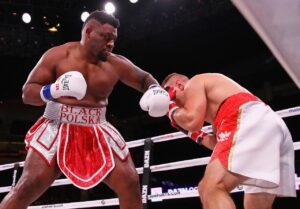
How to deliver a boxing punch smoothly
In order to deliver punches smoothly in boxing, a wide range of techniques and training are required, from the basics to advanced techniques.
Here we will introduce the main points for punching smoothly and effectively.
1. Learn correct form
- Master your basic posture: If you don’t have a stable basic posture before punching, you won’t be able to punch effectively. Place your feet shoulder-width apart, bend your knees slightly, and distribute your weight evenly across your feet.
- Refine your punching form: By learning the correct punching form and practicing it repeatedly, you will naturally develop smooth movements. Punching is a movement that uses the entire body, and it’s not just the fists, but also the arms, shoulders, hips, and legs that are important.
2. Improve footwork
- Improve your movement skills: Effective footwork is necessary to quickly change positions while maintaining balance and punch from advantageous positions. Practice step work from front to back, left to right, and practice throwing punches while moving.
3. Balance of speed and power
- Speed Training: Use speed bags and shadow boxing to improve your hand speed. Fast punches are harder for your opponent to predict and make it easier to break down their defense.
- Power training: It is also important to increase the power of your punches through heavy bag and weight training. It is important to train for a good balance between power and speed.
4. Rhythm and timing
- Develop a sense of rhythm: By being aware of the rhythm, your movements and punches will link smoothly, allowing you to hit effectively while minimizing unnecessary force.
- Practice your timing: It’s important to read your opponent’s movements and throw your punch at the perfect time. Through active sparring, you will train your reaction speed and judgment in a way similar to actual combat.
5. Ongoing training and feedback
- Daily training: Continuous training is necessary to improve your skills. Create a daily routine and steadily hone your skills.
- Take advantage of feedback: Accept advice from trainers and experienced boxers to improve your form and tactics.
In order to deliver punches smoothly in boxing, it is important to train these elements comprehensively.
The training is diverse, as it requires improvement not only in technique but also in physical and mental strength.
By making steady efforts and training faithfully to the basics, you will pave the way to smooth and powerful punches.

